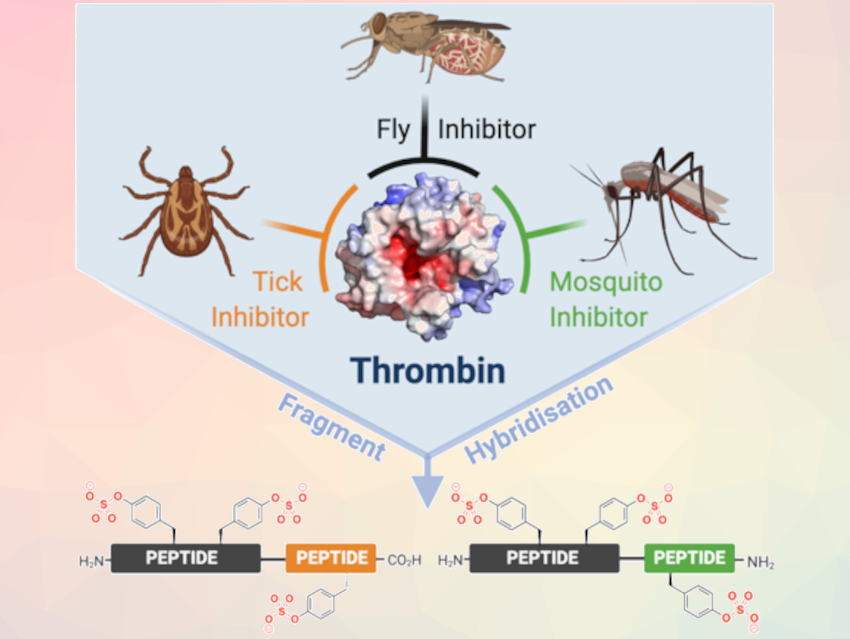Thrombosis, the clogging of blood vessels, is a major cause of heart attacks and embolisms. Pedro José Barbosa Pereira, Universidade do Porto, Portugal, Richard J. Payne, The University of Sydney, Australia, and colleagues have engineered the first inhibitors of thrombin, a protease promoting thrombosis, that is three-fold efficient. The team demonstrated that attacking three sites of the thrombin molecule is more efficient than attacking only two sites, which is the mode of action of many natural agents.
Anti-Thrombosis Factors
Soon after an injury, thrombin appears at the site of the wound, promoting platelet coagulation and fibrin development to clog the wound and grow new tissue. Unfortunately, inside blood vessels, uncontrolled thrombin activity may lead to clogged pathways causing fatal outcomes for patients. Thrombosis has come into focus recently when it appeared that it was one of the major complications of severe COVID-19.
Many biting and blood-sucking insects carry natural anti-thrombosis factors to keep the blood in a wound liquid. Some of these natural inhibitors have been turned into medicine. The most applied thrombin inhibitor is hirudin, a peptide isolated from leeches.
Trivalent Inhibitors
In their quest to optimize thrombin inhibition, the researchers scrutinized the way the inhibitors act. Most thrombin inhibitors from insects block two sites on thrombin. Usually, they attack the active site (the substrate-cleaving site) plus one of two other regions on the surface of the enzyme, which are important for regulating coagulation.
To cover all three sites with one drug, the researchers chose three natural inhibitors, which were then patched together. They connected the tsetse thrombin inhibitor, or TTI, from the tsetse fly with either an inhibitor peptide called variegin from a tropical tick or the inhibitor anophelin from the malaria mosquito Anopheles. The resulting hybrid peptides were designed to span all three binding sites of thrombin.
Potent Activities
This design proved to be efficient. According to the team, the “constructs from both hybrid series exhibited exquisitely potent thrombin inhibitory activities.” The researchers reported up to 385-fold inhibition for the hybrid involving the peptides from tsetse fly and Anopheles mosquito. For the other hybrids, the improvements were still 2- to 10-fold. Notably, in human plasma, all hybrids inhibited thrombin generation and platelet aggregation.
To test the constructs in a live body, the researchers applied one of the hybrids to a mouse model. Here, it made a thrombus shrink at least with the same efficiency as hirudin, and it reduced fibrin accumulation. The team hopes that this work will not only lead to efficient anticoagulation drugs, but will also help in the design of other peptide-based agents.
- Potent trivalent inhibitors of thrombin through hybridization of salivary sulfopeptides from hematophagous arthropods,
Stijn Agten, Emma Watson, Jorge Ripoll-Rozada, Luke Dowman, Mike Wu, Imala Alwis, Shaun Jackson, Pedro Pereira, Richard James Payne,
Angew. Chem. Int. Ed. 2020.
https://doi.org/10.1002/anie.202015127




